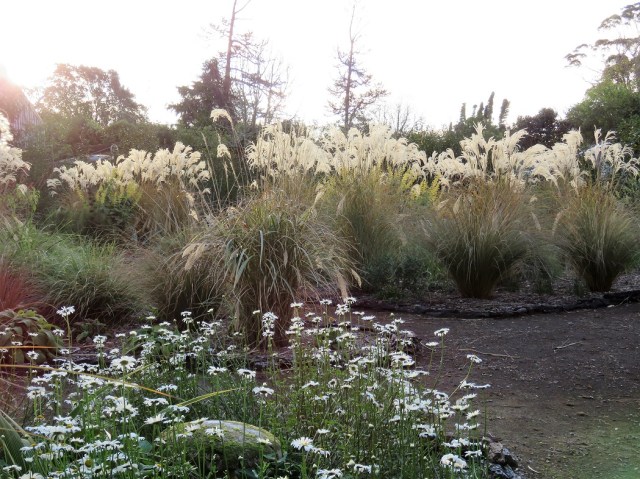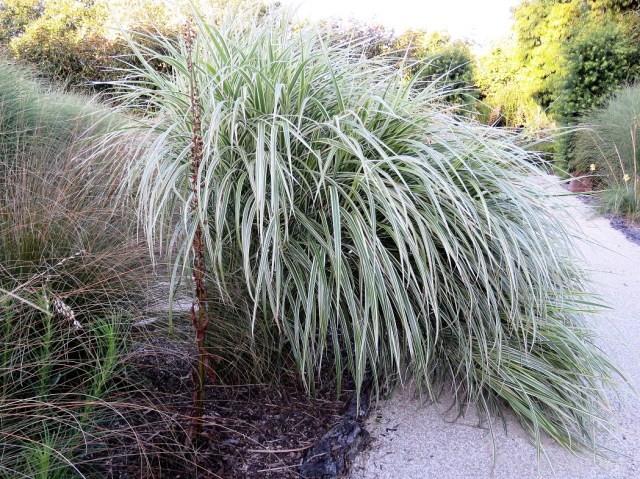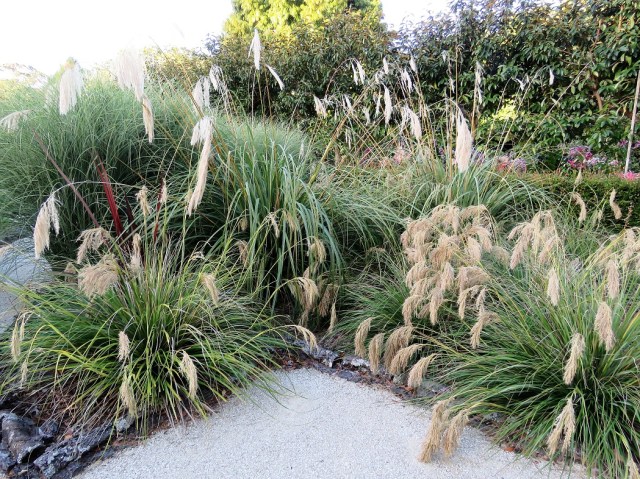
Some people like to plant a garden once and leave it. But some of us plant, look, think, weigh up what we have and then decide on action. I am not referring to minor tweaking and culling a few superfluous plants, more akin to major rejigs. I have two in mind, or maybe three. Always there is that quest for something close to perfection even while we know perfection in a garden that is growing will generally be ‘on the day’ only.

It is auratum lily time and the lily border is magnificent. But it could be better. I planted it in the winter of 2017 so this is its fourth summer. There are a couple of gaps that I thought I needed to fill; I have plenty of lilies I can relocate. But I have looked again and again and decided that it is time to dig the whole thing and replant it – but not until the lilies are going dormant in late autumn. When I first planted it, I put in large bulbs at about 15cm spacings – from the edges of the bulbs not the centres. When planted fairly deeply and spaced, the stems are strong enough to hold themselves up, even when topped by massive blooms. I do not want to have to stake these lilies. There are hundreds of them. Some areas are now so dense with offshoots already of flowering size that they are leaning on their neighbours and not standing upright. When they get too dense, the glory of individual blooms gets lost. It is time to lift the bulbs, cultivate the soil and respace them for next season, discarding the small offshoots. That’ll keep me busy for a week in autumn; there are about 30 metres of lily border.

In the herbaceous borders, I have been looking at the Anemanthele lessoniana with some concern. It is a native grass and one of our prettier ones with its orange tones in the foliage and light, feathery flowers with a hint of burgundy. But it festoons as it matures, rather than standing upright and the plants are now taking up a space with a diameter of at least 120cm and swamping their neighbours. It is too big for the borders. I shall relocate the plants into the grassy Court Garden and give them the space they want but it will leave some big gaps behind. I am wondering whether our native Poa anceps will make an acceptable substitute.

And I am spending a lot of time looking at the Court Garden. Just in its second year, I can see mistakes I have made. There are Too Many Miscanthus. M. ‘Morning Light’ is a wonderful grass and generally well behaved, a magical autumn mainstay, but I have badly overplanted them. For longer term management, I need to cull up to half of them to give the remaining plants room to star. We only ever started with one plant of it but boy, does it respond to being dug and divided.

I am looking in askance at the giant, variegated miscanthus (it may be Miscanthus sinensis ‘Variegatus’ or Japanese Silver Grass) that a friend gave me. Last year, I managed to keep the plants upright simply by tying a circle of jute string around each plant. They are too big for that this year, in just their second year. I don’t want to be digging such huge plants every second year in order to keep them manageable so I may reduce it down to just one or two specimens and weigh up their long term viability. Does their showiness outweigh the heft and effort needed?

What a star Stipa gigantea has been this year. It is all about the flower heads – golden oat grass – and because it is sterile, the flowers have stayed and stayed. After three months, they are still looking terrific. But, I can see I still have them planted too closely, despite culling half of them after last summer. As it matures, the plants can be anything up to a metre and half across and they look best standing in their own space. I need to take out a few more and centre the remaining ones so they don’t overflow onto the paths. It is all about having a critical mass with this stipa, so there are enough flowers to share with the marauding sparrows. They stripped them bare last season but this year they have flowered in abundance, with no evident decline in sparrow numbers. We clearly achieved some sort of balance of critical mass.

I have an open verdict still on whether Chionochloa flavicans will last the distance with us. It has the reputation of ‘whiffing off’ – dying out in patches – and it is too early to tell yet. At least I know I can use the anemanthele to replace it if I need to. Chionochloa rubra remains splendid but its time to star is in winter when it is the dominant form. In summer, it is less obvious amongst showier grasses.
It is going to take me ten years to come up with a reliable recommended plant list for this style of gardening but it is a lot of fun getting there. And I am fine with using two dominant exotic grasses (the stipa and miscanthus) when almost all the other grasses are natives. We are not native purists here, we like to mix and match but it is also satisfying to use our indigenous plants as equals in a garden setting.
As I have said before, digging and dividing is way easier if you do a little often because the ground stays friable, making the digging part much easier. If you don’t want to have to dig and divide, plant trees and shrubs, not perennials.


Nice to brush against your legs though as you walk down the path!
We have a wetter climate than you! I try to keep paths clear to avoid wet legs.
The last sentence has rung very true for me. Misguidedly I started to get hooked on perennials without realising that as soon as they touch NZ conditions there is no stopping them. In my mind they would be as well behaved as in English gardens where I spent time in the late 80’s early 90’s. Some are just too thug like here and will be relocated where their presence will be better tolerated and others may have to be returned to the earth as compost!
Isn’t that the truth! It is why I think it will take me ten years to come up with a recommended plant list for our conditions.
Every year we reckon the garden looks better than it has ever done before and every year we tweak things and remodel other bits. We’ve shifted a lot of grasses around this year as they’d all been planted too close together. I reckon remaking bits of the garden is much of the fun in gardening, especially with a big garden. We like the Anemanthele, but it fares very poorly in the wetter parts of the garden, so we don’t use it as much as we’d like, and various Carex species do better for us as well as Chionochloa rubra. We haven’t tried the Poa.
We have several Miscanthus sinensis ‘Variegatus’ that behave just like yours Abbie. I tried your string trick on one early in the season and it worked for a while, but then the plant just became too heavy for it to work any longer. But today I’ve tried Plan B, which is a trick I learnt from Monty Don on Gardeners’ World a few years back, making metal hoop supports from 6 mm reinforcing steel rods. I used 3 metre lengths to fashion the half round hoop with two legs (bent round a Douglas-fir to form the large semi-circle) and pushed well into the ground. That seems to have done the trick, with the grasses now much more upright than they were. You can’t spot the rusty metal hoop either.
They are so good at staking are good UK gardeners! Not a plastic stake in sight. I am hoping to work out a matrix that can grow without needing staking or regular lifting but that will take time. And indeed that constant refining process is what keeps some of us motivated – you and us.
The lilies are divine and I would be delighted to have such a display in our garden. I have strenuously avoided introducing grasses to the garden and think I will continue to do so. They do not appeal to me and generally look like so much mush here in our winters.
I only became a convert to grasses when I saw Bury Court near Farnham. J have never grown them before but I am getting my eye in to their understated charms.
I think they do best where there is a crisp cold winter as it is the winter which is so often spoken/written of as their best season, interest when most else is gone. Here, we have wet drab winters and they become uninteresting piles of mush, drab and brown.
It is all in the selection. We certainly lack cool, crisp winters here. All our native grasses are evergreen and that has its pros and cons. It is very interesting getting to grips with a whole new plant genus – new to me.